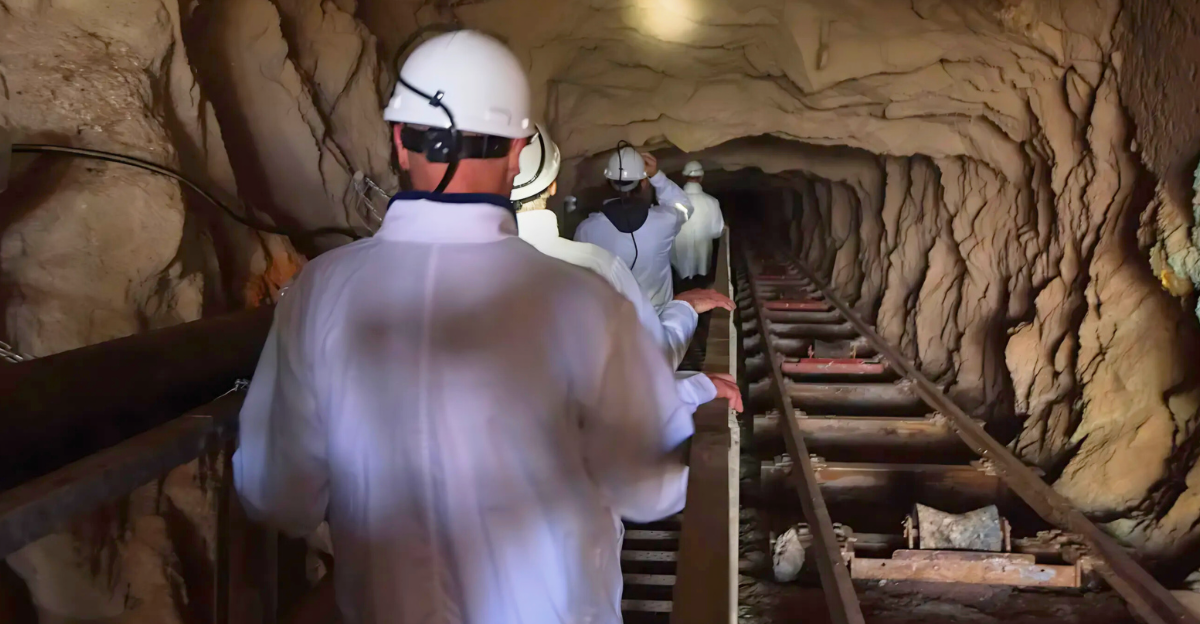
One of America’s most important resources is rare-earth elements. To lessen China’s grip on supply chains, significant infrastructure and money have been spent on the emerging sector.
On January 22, 2025, MP Materials opened the nation’s first fully integrated rare-earth metal-to-magnet facility in Fort Worth, Texas, setting the stage for a seismic shift in high-tech manufacturing. If the U.S. is successful, the industry could mean a largely domestic supply of rare earth elements.
China’s Chokehold

For decades, China supplied over 90% of the world’s high-performance rare-earth magnets, shaping global technology markets. This has led to a the U.S. having a dependency on the foreign markets, which gives China leverage during trade tensions.
This dominance has exposed American manufacturers to shifting Chinese export policies and periodic price shocks, magnified by geopolitical tensions. U.S. automakers, renewable energy companies, and weapons manufacturers depend on these specialized components for essential products. The U.S. has historically tried establishing rare earth element production lines, but they failed.
Domestic Production In The Past

Domestic rare-earth production has had a long and complicated past in the United States. The Mountain Pass mine in California was once the world’s leading supplier and made America a dominant producer, but it shuttered its doors in 2002 amid environmental and financial woes.
In the following decades, virtually all stages—from mining to magnet-making—shifted overseas, mainly to China. This had a significant impact on the economic pressure that the nation could use against the U.S.
Mounting Pressure

In recent years, the pressure to rebuild a U.S. rare-earth industry has climaxed as electric vehicle sales surged and global conflicts threatened supply stability. Automakers like GM and Ford warned of production risks should foreign sources be curtailed.
Meanwhile, the Pentagon flagged rare-earth reliance as a top-tier national security threat, supporting new public-private partnerships. This domestic demand has made rare earth elements a critical resource in multiple U.S. industries. Recently, a new supply chain has opened domestically in Texas.
Fort Worth

On January 22, 2025, MP Materials activated its Fort Worth production line, signaling a change in rare earth domestic production. The U.S. government took notice of this, and days later, the company secured a groundbreaking multibillion-dollar deal with the U.S. Department of Defense.
The agreement guarantees a $110 per kilogram minimum price for neodymium-praseodymium (NdPr) alloys, a linchpin for defense systems and green tech. Armed with a 10-year supply commitment and multistate operations, MP Materials now aims to ramp up to 10,000 metric tonnes annual capacity by 2028. This production line allows America to wean itself off of China if projections are met.
A Production Surge In The South

Texas and California are rapidly becoming rare-earth industry hotspots. MP Materials’ new Fort Worth plant directly employs hundreds and creates a supply chain across North America.
This is the first U.S. rare-earth magnet facility in a generation—expected to supply automakers and tech giants regionally. Texas officials have said that the economic windfall could be a blueprint for other states. However, if the industry fails, there will be more than just consequences for America’s rare earth element supply.
Job Opportunities And Concerns

For factory workers in Fort Worth, the facility is more an excited new experience. “I never thought I’d get to work on something that goes into electric cars and jets,” said Terry Brooks, who recently started at a pilot magnet plant.
As ramp-up continues, MP Materials promises hundreds more high-wage positions, with ongoing technical training. However, the last collapse the industry experienced is still fresh blow that many haven’t forgotten.
Getting Ahead

The American push has gotten the attention of global rare-earth players. Australia’s Lynas plots its own Texas facility, while Japanese and European governments accelerate supply chain investments to diversify away from China.
The Pentagon’s decade-long supply contract is a game-changer, anchoring new investment and reshaping procurement for years. Yet critics caution that new ventures could falter or spark fresh controversies without consistent demand and strong environmental oversight.
The Current Global Leader

Despite America’s surge, China remains the global leader, controlling at least two-thirds of mining and a staggering 90% of high-value magnet refining.
Market observers warn that while the U.S. will soon reach 1,000 tonnes of domestic magnet capacity, China’s production is more than 30 times larger, still making it the global leader.
The Future For Domestic Supply

Industry leaders and policymakers see 2025 as the opening gambit—not the endgame—in America’s rare-earth transition. With multibillion-dollar Defense Department support and ambitious supply deals, MP Materials is betting big on a long-term market shift.
However, gaps in heavy rare-earths, possible price wars, and global competition loom just beyond the horizon. It’s unlikely that the single production line could completely break China’s global grip. Still, as rare earth element production receives a renaissance in America, the world will watch as the next chapter in this high-stakes resource contest unfolds.






